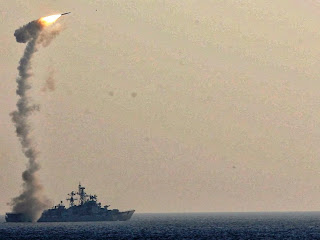A principios de julio, el primer ministro australiano Scott Morrison y la ministra de Defensa Linda Reynolds publicaron el Plan de Actualización Estratégica de Defensa 2020.
¿Qué describe esta Actualización?
La Actualización, el primer documento importante de política de defensa desde el Libro Blanco de Defensa de 2016, describe la dirección estratégica y las inversiones necesarias en la política de defensa y seguridad de Australia para la próxima década.
¿Qué marca esta Actualización?
La Actualización marca lo que muchos llaman un momento decisivo en la política estratégica australiana, ya que el documento señala la necesidad de cambios más rápidos y decisivos en la preparación y capacidad militar de Australia. A través de la asignación de 270.000 millones de dólares australianos en los próximos diez años para la adquisición de defensa y un mayor compromiso con los vecinos del Indo-Pacífico, la Actualización describe las acciones a través de las cuales Australia pretende controlar mejor un entorno estratégico que se está deteriorando ante el avance militar de China.
¿Cuál es el "Leit-Motiv" de la Actualización?
Durante el acto de presentación de la Actualización en Canberra, el Primer Ministro Morrison proporcionó una evaluación sombría del entorno estratégico que rodea la publicación del documento, al prever "un mundo post-COVID que es más pobre, más peligroso y más desordenado". La actualización señala un entorno estratégico notablemente diferente y cada vez más hostil al descrito en el Libro Blanco de Defensa de 2016, con las principales potencias militares cada vez más asertivas en la región y llevando a cabo actividades coercitivas que elevan la frecuencia de conflictos y el nivel de tensión.
¿Hacia dónde señala esta Actualización?
La Actualización señala hacia lo que algunos han sugerido como un retorno a la llamada doctrina de la "defensa de Australia" de mediados de la década de 1970, priorizando la planificación estratégica en las islas del Pacífico y Indo-Pacífico o lo que la Actualización considera como la "región inmediata" de Australia. Dentro de esta región, Australia ha reemplazado los objetivos estratégicos del Libro Blanco de Defensa de 2016 por tres nuevos objetivos: dar forma al entorno estratégico de Australia al profundizar el compromiso con otras naciones del Indo-Pacífico, disuadir las acciones contra los intereses australianos y responder a las amenazas con una fuerza militar creíble.
¿Qué refuerza la Actualización?
Como en casi todos los Libros Blancos y documentos de políticas que datan de mediados de la década de 1970, la Actualización refuerza la importancia de la alianza de Australia con Estados Unidos y la protección que brinda su arsenal nuclear. Sin embargo, parte de la excesiva dependencia militar de Washington al indicar que Australia asumirá "una mayor responsabilidad por nuestra propia seguridad" y "aumentará su capacidad de autosuficiencia para producir efectos disuasorios". Y para desarrollar las capacidades de disuasión de Australia, el Plan de actualización estratégica militar publicado junto con la Actualización, proporciona un impulso significativo al presupuesto militar, que representa actualmente el 2% del PIB de Australia.
¿De qué cantidad estamos hablando?
Para 2030, la Actualización señala que el presupuesto militar totalizará 575 mil millones de dólares australianos, En cuanto a su destino, lo prioritario será la modernización del armamento convencional obsoleto, donde una de las mejoras más destacadas va a ser la adquisición de misiles antibuque de largo alcance AGM-158C para equiparlos en la flota australiana de aviones F/A-18 Super Hornet. Los misiles reemplazan el viejo sistema de misiles Harpoon introducido hace casi cuatro décadas pues mientras que los Harpoon ofrecen un alcance de 124 km, los AGM-158C ofrecen un alcance de 370 km. También se destaca la inversión en cohetes de largo alcance y sistemas de artillería móvil, así como en misiles hipersónicos. La actualización también incluye disposiciones fuera de las armas convencionales, especialmente en capacidad espacial, ciberseguridad, sistemas de guerra electrónica y tecnologías emergentes, así como inversiones para actualizar la red de radares sobre el horizonte de Jindalee.
¿Cómo ha reaccionado China a la Actualización?
Si bien la actualización se ha recibido con el apoyo político interno bipartidista y una amplia bienvenida de muchos de los vecinos australianos en el Indo-Pacífico, la Actualización ha sido recibida con sospechas por parte de Beijing. La relación de Australia con China está en su punto más bajo en años, y el impulso de Canberra para una investigación internacional sobre el manejo de la pandemia COVID-19 ha desencadenado una disputa hostil entre las dos naciones. La actualización sugiere que Australia ha descartado ya su hasta ahora cuidadoso equilibrio económico y estratégico con Beijing y está más dispuesto a oponerse a las actividades chinas que puedan contravenir las leyes y normas internacionales. Este enfoque más asertivo puede hacer que la relación bilateral ya inestable se deteriore aún más, lo que tendrá un efecto importante a corto plazo para las industrias australianas que dependen de China. Es probable que la tensión futura se intensifique hasta la imposición de medidas económicas punitivas en la línea de los aranceles impuestos por China a las exportaciones de cebada australianas en mayo, y que tales acciones generen importantes impactos económicos a corto plazo.
¿Qué puede hacer Australia para evitar el impacto económico?
Australia ha reconocido su vulnerabilidad y hay medidas para comenzar a desacoplarse parcialmente de China y diversificar sus relaciones económicas y comerciales, incluido un acuerdo de libre comercio firmado recientemente con Indonesia. Los encargados de la formulación de políticas también están buscando un compromiso militar y estratégico más profundo con la India, que está comenzando a expresar sus preocupaciones sobre el expansionismo territorial chino. Mientras que a corto plazo Australia seguirá siendo vulnerable a las acciones punitivas de China, a largo plazo el impacto de tales acciones podría disminuir.







